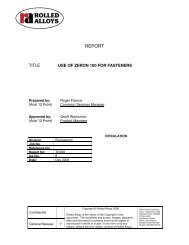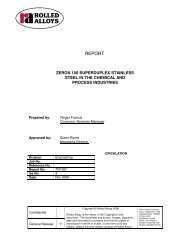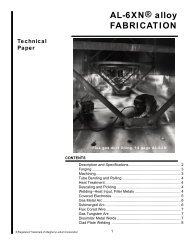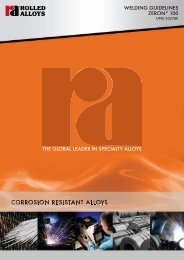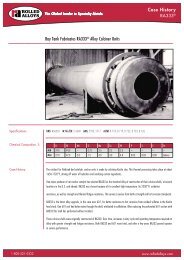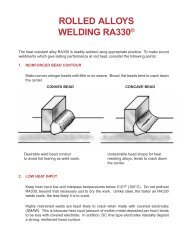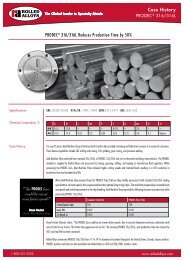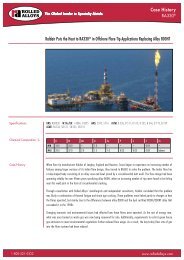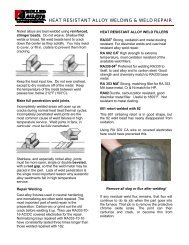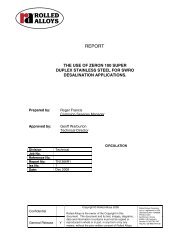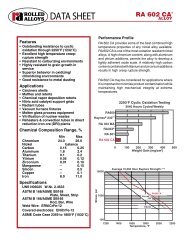General Product Safety Data Sheet - Rolled Alloys
General Product Safety Data Sheet - Rolled Alloys
General Product Safety Data Sheet - Rolled Alloys
Create successful ePaper yourself
Turn your PDF publications into a flip-book with our unique Google optimized e-Paper software.
Section V – FIRE FIGHTING MEASURES<br />
As shipped, these products are nonflammable and non-explosive. If subjected to<br />
fabrication by welding, however, welding arcs and sparks can ignite<br />
combustibles, and can initiate fires and explosions. Be sure you read and<br />
understand American National Standard Institute standard ANSI Z49.1 "<strong>Safety</strong> in<br />
Welding and Cutting" and National Fire Protection Association standard 51B for<br />
fire prevention in "Cutting and Welding Processes" before using these products.<br />
Extinguishing<br />
N/A<br />
Unusual Fire and Explosive Hazards<br />
N/A<br />
Special Fire Fighting Procedures<br />
N/A<br />
Media Flash Point (Method Used)<br />
N/A<br />
Flammable Limit<br />
N/A<br />
Section VI – ACCIDENTAL RELEASE MEASURES<br />
In solid form this material poses no special clean-up problems. If this material is<br />
in powder or dust form, notify safety personnel, isolate the area and deny entry.<br />
Do not sweep. Clean-up should be conducted with a vacuum system utilizing a<br />
high efficiency particulate air (HEPA) filtration system. Caution should be taken to<br />
minimize airborne generation of powder or dust and avoid contamination of air<br />
and water. Cleanup personnel should protect against exposure. Properly label all<br />
materials collected in waste container. Follow applicable emergency response<br />
regulations, such as OSHA (29CFR 1910.120).<br />
Section VII – HANDLING AND STORAGE<br />
HANDLING PRECAUTIONS - Dust and welding fume should be moved or<br />
transported to minimize spill or release potential.<br />
STORAGE PRECAUTIONS - In solid form, these materials pose no hazards.<br />
Section VIII – EXPOSURE CONTROLS/PERSONAL PROTECTION<br />
ENGINEERING CONTROLS - Local exhaust ventilation should be used to<br />
control exposure to airborne dust and fume emissions near the source (during<br />
welding, plasma arc cutting, sawing, grinding, etc.) below the exposure limits<br />
cited in Section 2.<br />
RESPIRATORY PROTECTION - Use a fume respirator or an air supplied<br />
respirator where local exhaust or general ventilation does not keep exposure




